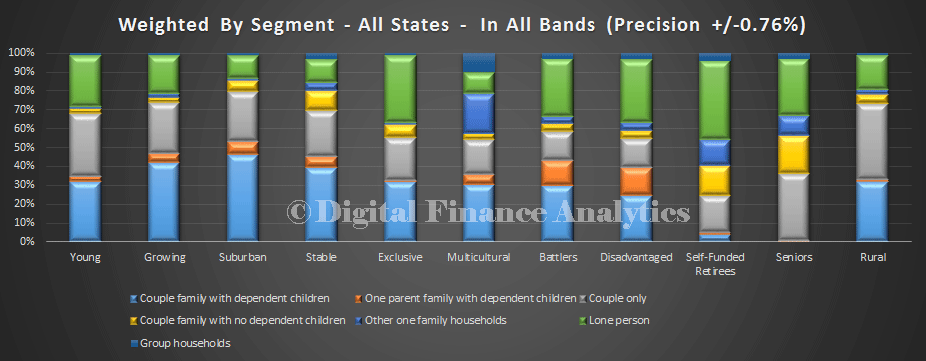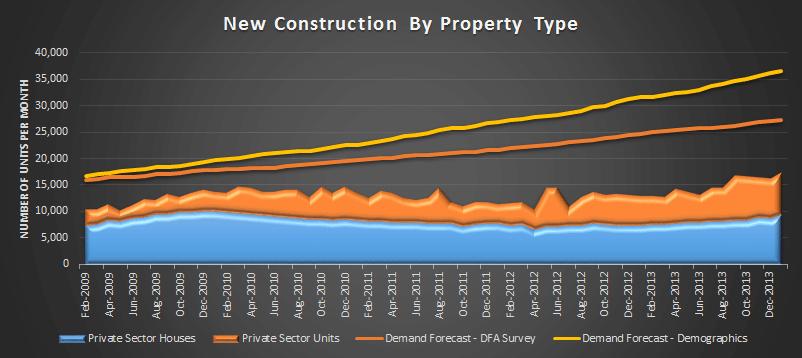
By Martin North, cross-posted from the Digital Finance Analytics Blog
Today we continue our series on housing demand, by looking at the underlying drivers across the states. We find that there are some important differences in household form and structure which explains some of the regional variations we highlighted previously.
The results are based on a combination of our own household surveys, and ABS data on social trends. This shows the mix of households types by state. The highest proportion of couples with dependent children are in WA (29%), compared with 26% in NSW and VIC, and 24% in TAS. In contract, TAS and SA has 28% of households comprised of lone persons, whereas NSW has 25%, WA 24% and NT 17%. Couples only, are highest in TAS (28%), WA (28%) and NT (29%) and lowest in Vic (24%) and ACT (24%).
 But to understand whats going on we need more detail. This is how we model the demand for property. We overlay households by type, add in net migration, property status, and if we overlay the DFA household segments, we see how these variations translate into specific household groups – with very different property needs.
But to understand whats going on we need more detail. This is how we model the demand for property. We overlay households by type, add in net migration, property status, and if we overlay the DFA household segments, we see how these variations translate into specific household groups – with very different property needs.  Finally, we see that different segments require different types of property, though modified of course by practicalities like price and availability. Here is data showing the demand for new units by segment, showing how this demand is impacted by the locale also. Below that we show the same data for detached houses.
Finally, we see that different segments require different types of property, though modified of course by practicalities like price and availability. Here is data showing the demand for new units by segment, showing how this demand is impacted by the locale also. Below that we show the same data for detached houses.

 This data is drawn from our surveys, and incorporates the latest DFA estimates on migration by state. So we begin so see that the mix of property required is a function of demography. In WA, demand is highest for detached houses in the suburbs, correlated to the large number of younger families with children. The demand for units is strongest amongst younger households seeking to live close into the CBD. The rise of older single households is translating into demand for units and small houses in the outer suburbs and urban fringe. I do not have time to go though all the state-by-state analysis here.
This data is drawn from our surveys, and incorporates the latest DFA estimates on migration by state. So we begin so see that the mix of property required is a function of demography. In WA, demand is highest for detached houses in the suburbs, correlated to the large number of younger families with children. The demand for units is strongest amongst younger households seeking to live close into the CBD. The rise of older single households is translating into demand for units and small houses in the outer suburbs and urban fringe. I do not have time to go though all the state-by-state analysis here.
But in our earlier post, we highlighted the demand supply gap, now we begin to see the drivers to demand, and how demography drives it.


